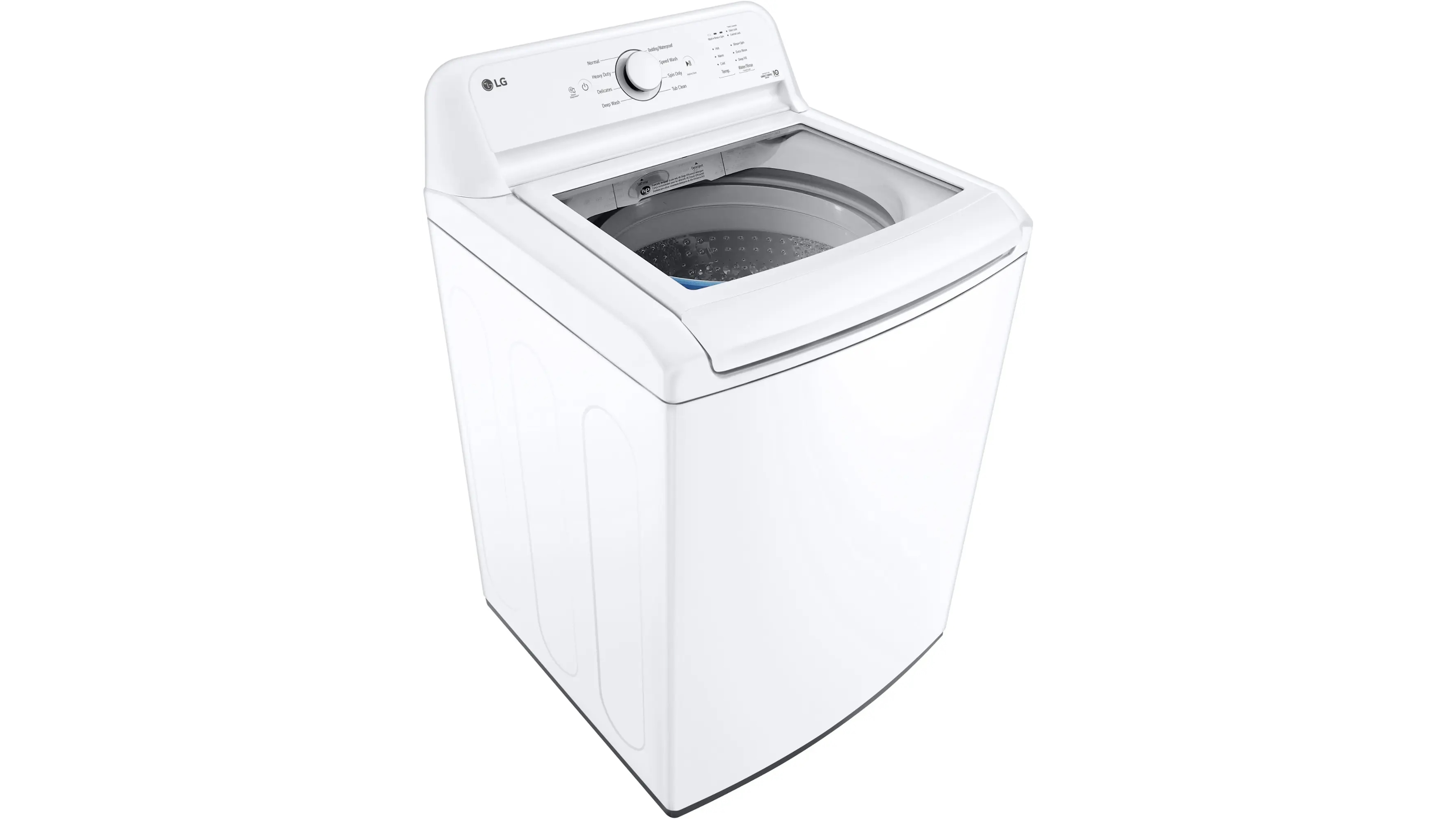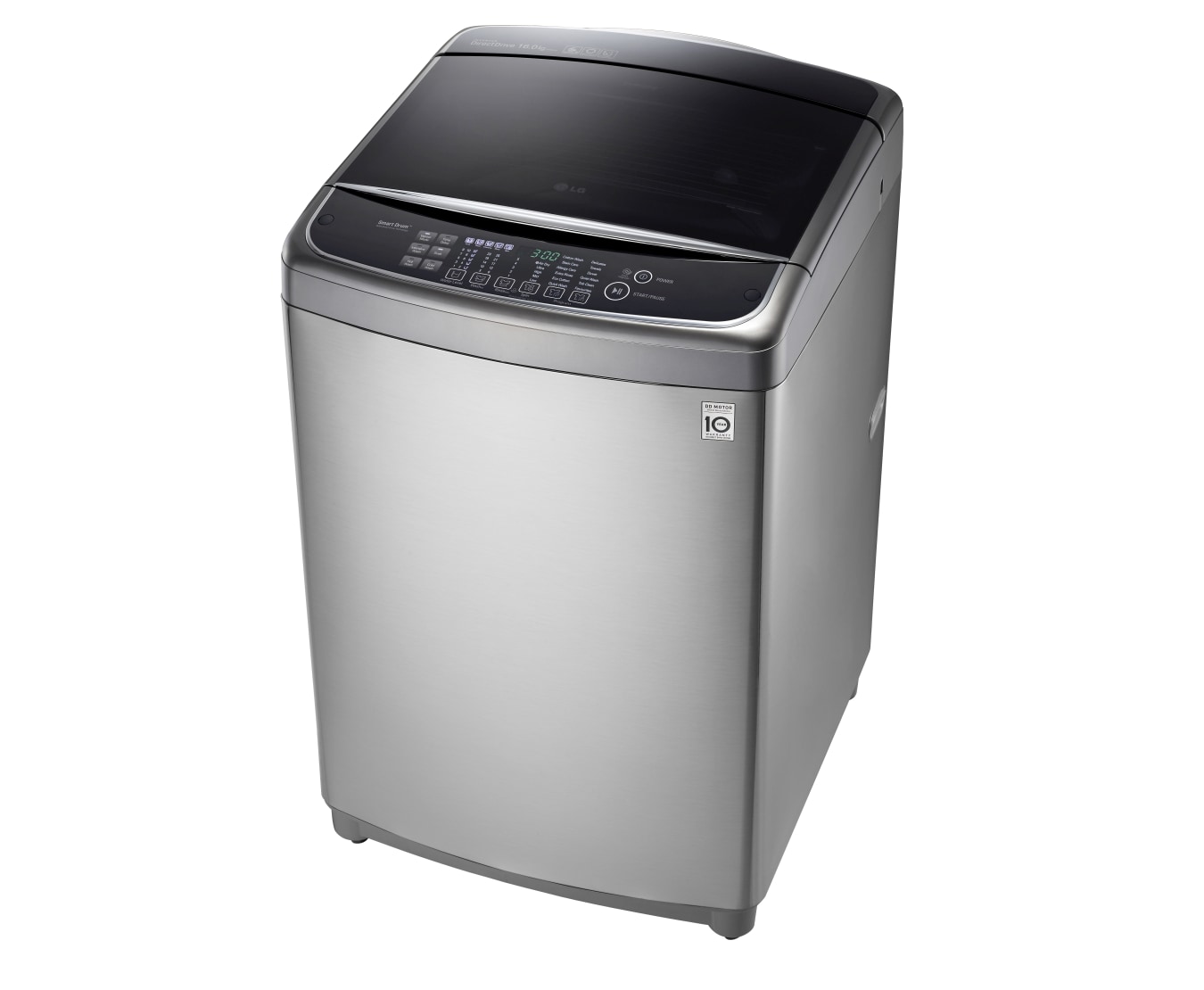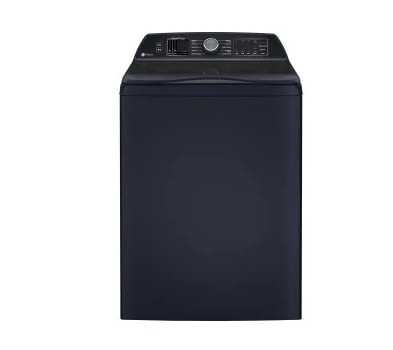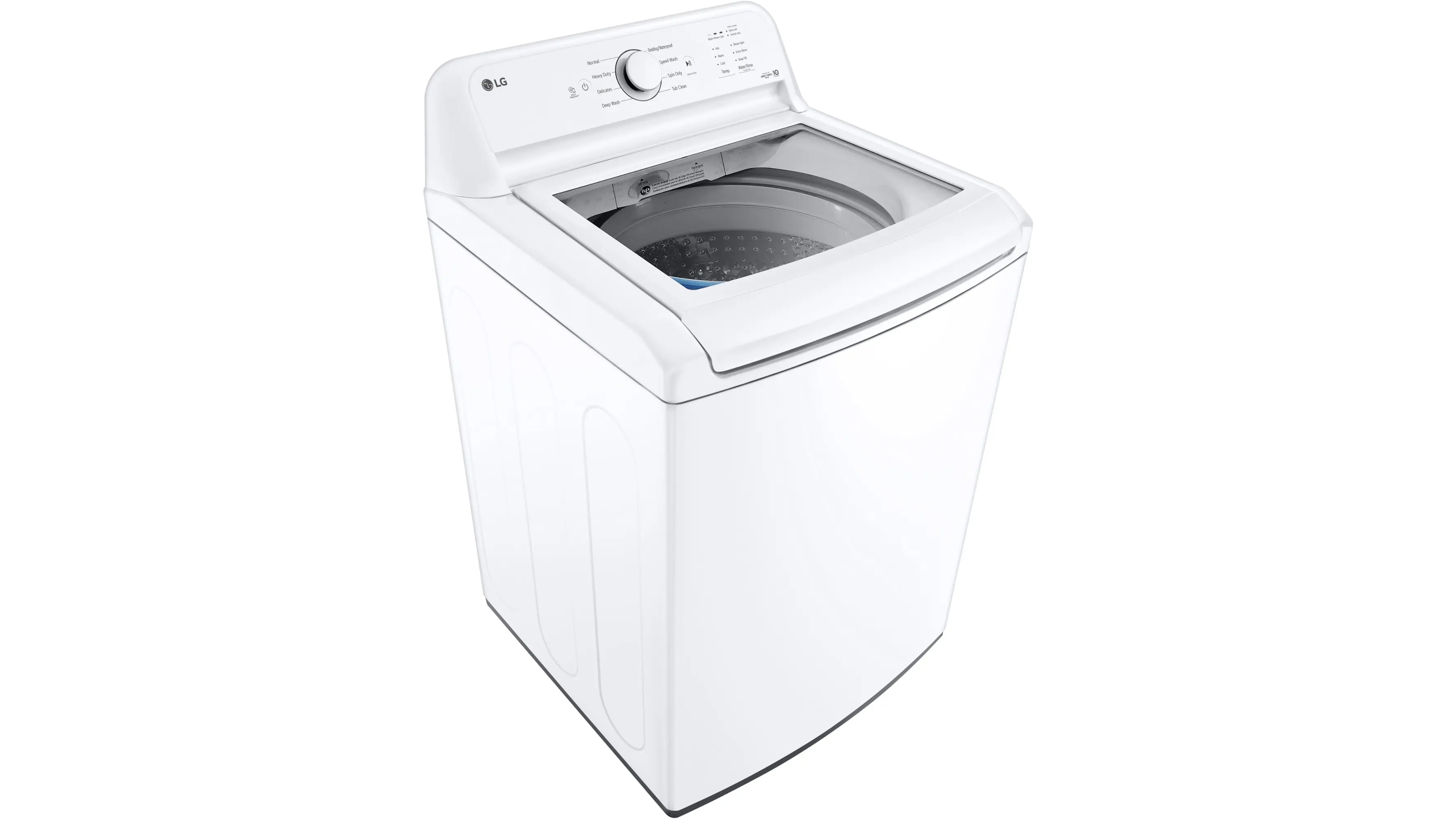Top-Load Washers 2025: Best Models for Large Families 🧺 Powerful, Spacious & Affordable Picks!
In today’s fast-paced world, choosing the right washing machine can significantly impact your daily routine. Top-Load Washers are a popular choice—known for their ease of use, faster cycle times, and affordability. Whether you’re shopping for the best top load washer for large families, or evaluating whether a high efficiency top load washer is worth it, understanding the nuances of these appliances is essential. This comprehensive guide will explore everything from washer types to maintenance tips, helping you make an informed purchase that meets your specific needs.
$1,299.00
Introduction to Top-Load Washers

Overview of Top-Load Washers
Top-Load Washers have been a staple in households for decades, favored for their simple design and straightforward operation. They are distinguished by a door located at the top of the machine, which allows for easy loading and unloading without bending over excessively. Their internal mechanism typically involves a central agitator or impeller, which moves laundry through water and detergent for effective cleaning.
Unlike front-load washers, top-load models generally offer faster wash cycles, making them an attractive choice for busy households. In addition, their design often makes maintenance and troubleshooting more accessible. Over the years, the technology behind top-load washers has evolved, offering features such as high efficiency cycles, noise reduction, and smart connectivity.
The market today offers a diverse array of top-load washers, ranging from traditional agitator models to modern high-efficiency impeller designs. Selecting the right model involves understanding your household’s specific laundry needs, space constraints, and preference for energy efficiency.
Advantages of Using Top-Load Washers

One of the primary benefits of top-load washers is their user-friendly design. Loading laundry is quick and convenient, especially for larger loads, as the wide-opening lid allows for easy placement of bulky items like comforters and towels. Additionally, the ability to add laundry during the wash cycle—something not possible with many front-load models—provides flexibility in busy households.
Another significant advantage is the generally shorter wash cycle times. This efficiency makes top-load washers ideal for households that need quick turnaround times for laundry. Moreover, many top-load washers possess robust construction, often leading to better durability and ease of repair compared to front-load alternatives.
Cost is also a compelling factor. Traditional top-load washers tend to be more affordable initially and have lower installation costs. Plus, with functions tailored for various laundry needs, from delicate fabrics to heavy-duty cleaning, they cater to a broad spectrum of users.
Lastly, modern top-load washers have incorporated innovative features, such as advanced water level controls, multiple cycle options, and Wi-Fi connectivity, adding convenience and efficiency to the laundry process.
Considerations for Families When Choosing a Washer
When selecting a top-load washer suitable for family use, several factors come into play. Larger families, for example, require machines capable of handling big loads with minimal cycles, making best top load washer for large families a top consideration.
Capacity is paramount; a washer with a large drum size allows families to wash bulky items and larger loads in one cycle, saving time and energy. Brands like LG, Samsung, and Whirlpool are popular choices, offering models with capacities over 4.5 cubic feet, suitable for big households.
Another critical feature is water and energy efficiency. With growing concerns over utility costs and environmental impact, choosing a high efficiency top load washer can lead to substantial savings. Models with ENERGY STAR certification combine performance with savings, greatly beneficial for families aiming to reduce their carbon footprint.
Durability and ease of maintenance are essential since frequent use can lead to wear and tear. Features like top load washer agitator vs impeller allow families to select washers based on their washing preferences and fabric care needs. An agitator may be more aggressive, ideal for heavily soiled workwear, while an impeller offers gentler, more energy-efficient cleaning.
Noise levels and cycle options also matter, as quiet operation can significantly improve household comfort. Finally, consider budget and long-term value—prioritizing best value for money will ensure your investment pays off over the years.
Best Top Load Washers for Large Families
Key Features to Look for in Family-Friendly Washers
When shopping for the best top load washer for large families, certain features are non-negotiable. Capacity is at the top of this list; a drum capacity of at least 4.5 cubic feet or greater ensures you can handle bulky and multiple loads efficiently. Larger drums reduce the number of cycles needed and help save time.
Durability and build quality are also paramount. Family washers endure frequent use, so selecting models with sturdy construction and high-quality components is wise. Many of the top brands offer stainless steel drums, which resist rust and last longer than plastic variants.
Cycle versatility is another crucial factor. Look for washers with multiple wash cycles tailored to different fabrics and soil levels. Features like deep rinse, sanitize cycles, and quick wash options provide flexibility for different laundry demands and help maintain fabric integrity.
Energy efficiency should not be overlooked—models with Energy Star certification tend to consume less water and electricity, which is advantageous for cost savings and environmental impact. Additionally, features such as smart technology (compatible with apps) give parents and busy households greater control and monitoring capabilities remotely.
Lastly, consider ease of maintenance features like self-cleaning cycles or accessible lint filters. These help keep the washer clean, prevent odors, and extend its lifespan.
Reviews of Top Models for Large Households
Based on consumer feedback, product specifications, and performance tests, several top load washers stand out as ideal for large families.
LG WT7900HBA is renowned for its enormous 5.5 cubic feet capacity, making it a top contender for best top load washer for large families. Its HE (High Efficiency) technology ensures superb cleaning while using less water, and the smartThinQ app allows remote control and diagnostics.
Samsung WA50R5400AV offers a large 5.0 cubic feet drum, robust wash cycles, and innovative impeller technology that gently cleans clothes without excessive wear. Its energy-efficient features and quiet operation make it a family favorite.
Whirlpool WTW4816FW provides an excellent balance of capacity and durability, with a dependable agitator system. It supports multiple wash cycles, including deep clean and heavy-duty modes, perfect for families dealing with varied laundry loads.
Price ranges for these models vary from mid-tier to premium, but the long-term savings from energy-efficient technology and durability justify the investment. These models exemplify how families can enjoy convenience, efficiency, and robust performance.
Price Range and Value for Money
The best top load washer for large families typically falls within a price range of $700 to $1,200, depending on features and capacity. While some may seem costly upfront, their efficiency, durability, and large capacity make them a worthwhile investment.
Budget-friendly models under $700 can still provide solid performance and essential features. For example, certain Whirlpool and Kenmore models offer decent capacity and cycles at a more affordable price point.
Mid-range washers with advanced features, larger drums, and energy-saving technology tend to hover in the $900 to $1,000 range. These offer excellent value, especially considering their long-term savings and convenience.
Premium models exceeding $1,200 tend to include smart features, ultra-large capacities, and specialized cycles. They are best suited for tech-savvy families or those seeking the utmost in laundry convenience.
The key is balancing initial cost with long-term savings—models with good energy efficiency and durability often pay for themselves over time through lower utility bills and reduced maintenance costs.
Energy Efficiency and Cost Savings
Energy-efficient top-load washers significantly contribute to lowering household utility bills and reducing environmental impact. Technologies like high efficiency top load washer systems utilize less water and electricity by optimizing wash cycles and water levels.
Models with ENERGY STAR certification meet strict criteria for efficiency. These washers use sophisticated sensors to adjust water and cycle time based on load size, preventing wasteful overuse. Additionally, features like load sensing and cycle optimization enhance efficiency further.
In terms of cost savings, energy-efficient washers can cut water bills by up to 50% and electricity costs considerably. Over the lifespan of the appliance, this can amount to hundreds of dollars saved. Plus, they often come with better spin speeds, which remove more water from clothes, reducing drying time and energy consumption in dryers.
Choosing the right model means evaluating its long-term savings potential versus upfront costs. Many users find that investing in energy-efficient top load washers aligns with environmentally conscious living while providing tangible financial benefits.
Top Load Washer Agitator vs Impeller

Understanding Agitator vs. Impeller Design
When choosing a top load washer, understanding the difference between agitator and impeller systems is essential. The agitator is a central post with fins that move clothes back and forth, effectively loosening dirt and stains. Historically, agitator models have been the standard and are known for aggressive cleaning.
In contrast, the impeller is a low-profile disc or plate that spins to create currents in the wash tub, gently moving clothes through water. Impeller-driven washers tend to be more gentle, conserving fabric integrity while using less water and energy. Many modern high-efficiency models favor impeller technology for its cleaning performance and water savings.
Each system has its merits. Agitators excel in deep cleaning, especially for heavily soiled items, but may be rougher on delicate fabrics. Impellers, on the other hand, offer a gentler approach suitable for fragile clothing and energy-conscious households.
Benefits and Drawbacks of Each Technology
The agitator system is praised for its robustness and proven cleaning performance. Its design allows for deep penetration, ideal for laundry involving outdoors or work clothes that are heavily soiled. However, agitators often consume more water and energy, and their aggressive action can cause wear on fabrics over time.
Impeller systems provide a gentler wash, reducing wear and tear on clothes, especially delicate fabrics. They also tend to use significantly less water, aligning with high efficiency top load washer standards. The trade-off is that some users feel impellers may not clean as deeply for stubborn stains, though advancements have closed this gap.
In terms of maintenance, agitators might require more frequent cleaning due to residues and buildup around the fins. Impeller models often have fewer parts susceptible to damage, leading to easier long-term upkeep.
Choosing between agitator vs impeller often boils down to washing needs. Heavy-duty, outdoor, or workwear laundry may benefit from an agitator, while families wanting to preserve delicate fabrics and save on utility bills might prefer impeller models.
Recommendations Based on Washing Needs
For households with large families tackling a variety of laundry types, understanding which system caters best to your needs is critical.
If your laundry predominantly includes heavily soiled items like sports uniforms, work clothes, or outdoor gear, an agitator washer can provide the deep cleaning power required. Brands like Whirlpool and Kenmore still produce reliable models with robust agitator systems that are top-rated for cleaning performance.
Conversely, if your laundry mainly involves delicate fabrics, activewear, or environmentally conscious washing, a top load washer with impeller technology may be the right choice. These models care for your fabrics while conserving resources, an important consideration for eco-minded families.
For best overall performance, high-end impeller models incorporate features like vibration reduction and specialized cycles for wool, silk, or delicate fabrics. Their lower water consumption and gentler washing process often make them the top choice for modern households.
Consumer Preferences and Trends
Trends currently favor impeller-based washers due to their water efficiency, gentle cleaning, and compact design. Many consumers are shifting towards high efficiency top load washer models that combine impeller technology with smart features for enhanced convenience.
However, still, a segment of consumers prefers agitator washers due to their proven track record in removing stubborn dirt and their perceived superior cleaning capabilities. Some users also appreciate the simpler mechanics, which tend to be easier and less costly to repair.
Manufacturers are responding to these preferences by innovating both systems with features like quieter operation, better fabric care, and connectivity options. The consumer preference continues to evolve, emphasizing eco-friendliness, efficiency, and durability.
How to Clean a Top Load Washer Drum

Importance of Regular Maintenance
Regularly cleaning your top load washer drum is crucial to maintaining its performance and prolonging its lifespan. Over time, detergent residues, fabric softeners, and dirt can accumulate, leading to unpleasant odors, bacterial growth, and even mold.
Performing consistent maintenance ensures your laundry remains fresh and your washer operates efficiently. Neglecting cleaning can result in detergent buildup that impairs water flow and reduces cleaning effectiveness, affecting your top load washer not spinning fix.
A clean drum also prevents unsightly stains and foul smells, keeping your home environment healthier. Since top load washers are often used frequently, establishing a routine of cleaning at least once a month is advised.
Step-by-Step Guide to Cleaning
Cleaning the drum of your top load washer involves a few straightforward steps:
Start by running an empty cycle with hot water and add a cleaning agent like white vinegar or a commercial washing machine cleaner such as AFFRESH. Vinegar naturally dissolves soap scum, kills bacteria, and deodorizes.
For a more thorough cleaning, pause the cycle halfway through and wipe down the inside of the drum with a soft cloth, paying attention to the rubber door seal and surrounding areas where mold can form. Use a toothbrush to scrub crevices and remove any stubborn residues.
Next, run an additional hot water cycle without any cleaning agents to rinse out residues. Afterward, clean the detergent dispenser and lint filters to prevent clogging. Keep the lid open after each wash cycle to improve airflow and dry out residual moisture, reducing odor buildup.
Finally, regularly check and clean the filter and drain pump, which can collect lint and debris, hindering proper spinning and draining. Following this routine will help keep your top load washer operating optimally and extend its lifespan.
Common Issues and Preventive Measures
Common problems associated with top load washers include mold or mildew odors, top load washer not spinning fix, and detergent residue buildup. These issues often stem from poor maintenance practices or improper cleaning routines.
To prevent mold and odors, leave the lid or door slightly open after washing to allow air circulation. Use the correct amount of high-efficiency detergent—too much can cause soap scum—and choose hot water cycles periodically to eliminate bacteria and residues.
For top load washer not spinning fix, routine checks of the lid switch, drive belt, and motor are recommended. Sometimes, a simple reset or cleaning of the lid switch can resolve spin issues. If problems persist, consulting a professional technician might be necessary.
Avoid using harsh chemicals that can damage rubber components or disassemble parts unnecessarily. Regular maintenance, including cleaning the drum and filters, will prevent many common problems and help your washer function smoothly.
Recommended Cleaning Products
Using specialized products designed for washing machines can simplify the cleaning process. Brands like AFFRESH include washing machine cleaning tablets or liquids formulated to remove soap scum, oils, and detergent build-up.
Natural options like white vinegar and baking soda are inexpensive and effective. Use about two cups of vinegar in a hot water cycle to deodorize and disinfect. Baking soda can be added during or after cleaning for extra freshness.
In addition, bacterial and mold preventers such as OxiClean Washer Machine Cleaner or Tea Tree oil solutions can be used periodically for deeper sanitation. Always follow the manufacturer instructions to avoid damage or voiding warranties.
Proper maintenance and cleaning not only keep your top load washer in peak condition but also ensure your laundry remains fresh, spotless, and odor-free.
Is High Efficiency Top Load Washer Worth It?

Definition and Features of High Efficiency Models
A high efficiency top load washer (often referred to as HE) incorporates advanced technology to maximize cleaning while minimizing water and energy consumption. These models use impeller technology or specially designed agitators that optimize water flow and cleaning action.
Key features include load-sensing capabilities, multiple cycle options, and digital controls to customize wash performance. Many HE washers are designed to deliver powerful cleaning results comparable to traditional models, but with a smaller ecological footprint.
In recent years, high efficiency top load washers have become increasingly popular among environmentally conscious consumers and families seeking long-term savings. Their compact design allows for Freedom in fit, especially in smaller laundry spaces such as apartments and condos.
Comparison with Traditional Models
Traditional top-load washers, often with vertical agitators, tend to use more water and electricity, making them less appealing for environmental and cost considerations. While they may have fewer features, they are generally simpler to operate and maintain.
HE models, on the other hand, utilize less water—up to 50% less in some cases—and have faster spin speeds that extract more water from clothes, reducing drying time and energy use in dryers. They also tend to incorporate smart technology, allowing remote monitoring and cycle customization.
However, some users worry that high efficiency washers may not clean heavily soiled items as thoroughly as traditional models. Advances in impeller design have alleviated this concern, providing deep cleaning capabilities that rival or surpass older agitator models.
Long-Term Benefits and Savings
Investing in a high efficiency top load washer offers significant long-term benefits. Reduced water and energy consumption directly translate into lower utility bills, often offsetting the higher initial purchase price.
Many consumers report increased satisfaction due to better fabric care and quieter operation. Additionally, manufacturers often include eco-friendly cycles that thoroughly clean while preserving delicate textiles.
Over the lifespan of the washer, savings on water, electricity, and detergent contribute to environmental conservation, making HE washers a responsible choice. For households seeking value for money, these models present a compelling case, especially as utility rates continue to climb.
Customer Reviews and Feedback
Most customer feedback emphasizes the reliability and efficiency of high efficiency top load washers. Users appreciate their ability to handle larger loads with less water and electricity, and many praise the robust cleaning even on delicate items.
Some reviews mention initial adjustment to cycle settings and learning how best to optimize energy savings. Still, once familiar, users find their HE washers seamless and cost-effective.
In conclusion, whether worth it depends on your household size, laundry needs, and commitment to sustainability. Given their features, long-term savings, and positive reviews, high efficiency top load washers are a smart investment for many modern homes.
Troubleshooting: Top Load Washer Not Spinning Fix

Common Causes of Spin Issues
One of the most frustrating problems in laundry days is a top load washer that refuses to spin. Common causes include a malfunctioning lid switch, imbalance in the load, or problems with the drive belt and motor.
Incorrectly loaded laundry—such as uneven or overloaded baskets—can cause the washer to halt its spin cycle to prevent damage. Mechanical issues like a worn-out belt or defective lid switch can also interfere with the spinning function.
Electrical issues or problems with the control board may also lead to spin failure. Regularly inspecting these areas can help diagnose the problem efficiently.
Step-by-Step Troubleshooting Guide
Start by ensuring the lid is closed properly. The lid switch acts as a safety lock; if faulty, the washer won’t spin. Test the switch with a multimeter or simply replace it if suspected defective.
Next, check whether the load is balanced—redistribute clothes evenly to prevent excess vibration. Confirm that the drain hose is clear, and water is draining properly, as excess water can hinder spinning.
Inspect the drive belt for signs of wear or breakage. If damaged or loose, replacing or tightening it often resolves the issue. For motors or control problems, consulting a professional technician is advisable.
Finally, reset the washer by unplugging it for about five minutes before plugging back in and starting the cycle again. If the problem persists, professional repair may be necessary.
When to Seek Professional Help
If basic troubleshooting does not resolve the top load washer not spinning fix, it’s time to call a qualified technician. Issues like motor failure, control board faults, or broken belts require specialized tools and expertise.
Professional service ensures safety, proper diagnosis, and effective repairs without risking further damage. Regular servicing can prevent unexpected breakdowns and extend your washer’s lifespan.
Preventive Maintenance Tips
Regularly inspect and clean the lid switch and drain filter. Avoid overloading and unevenly distributing laundry, which can cause imbalance and damage.
Perform periodic checks of drive belts and motor components, especially if you notice unusual noises or vibrations during operation. Keep the washer clean and dry around door seals and lint filters to prevent mold and odor issues.
Adhering to routine maintenance and prompt troubleshooting preserves the functionality of your top load washer and keeps laundry day hassle-free.
Best Compact Top Load Washer for Apartments

Key Features of Compact Washers
In compact spaces like apartments, a top load washer must deliver efficient performance without taking up excessive space. Features to look for include space-saving dimensions, large enough capacity for household needs, and energy efficiency.
Despite a smaller footprint, many compact models now offer useful cycle options, quiet operation, and smart technology integration. Given the limited space, durability and ease of installation are also essential considerations.
Recommendations for the Best Models
The LG WT8061CW, with its 2.3 cubic feet capacity, is ideal for small households, offering reliable cleaning and features like TurboWash technology that shortens cycle times. It is energy-efficient and supports various wash cycles, including delicate and heavy-duty.
Another popular choice is the Samsung WT45R6100. It’s designed to fit in tight spaces and includes features such as digital controls, child lock, and Learn Cycle preferences for optimized washing.
Benefits of Using Compact Washers in Small Spaces
A best compact top load washer for apartment offers portability and flexibility. It fits easily into laundry closets, utility rooms, or kitchens, freeing up precious space while maintaining performance.
Compact models consume less water and electricity, reducing utility bills—a vital factor for apartment dwellers. Their straightforward operation and quick cycles enable efficient laundry management for busy individuals or small families.
Furthermore, many modern compact washers feature smart technology that allows remote control via smartphone apps, automating and simplifying laundry routines.
Installation Considerations for Apartments
Installing a compact top load washer requires thoughtful planning. Ensure there is adequate ventilation and proper drainage. Check your local building codes and apartment policies regarding appliance placement.
Most compact washers are designed for easy hookup, with standard water supply and electrical connections. Some models are portable or stackable, offering additional flexibility in tight spaces.
By choosing the right model and adhering to installation guidelines, you can enjoy reliable, efficient laundry performance even in limited living areas.
## Conclusion
/Washing-Machine-GettyImages-185219964-5865d0ab5f9b586e02c084f7.jpg)
Choosing the right top-load washer involves understanding your household’s unique needs, whether it’s capacity, energy efficiency, or space constraints. Options like best top load washer for large families, top load washer agitator vs impeller, and is high efficiency top load washer worth it offer diverse benefits tailored to different lifestyles. Regular maintenance, including how to clean a top load washer drum, ensures longevity and optimal performance. Troubleshooting common issues, such as a top load washer not spinning fix, helps maintain smooth operation. For small living spaces, the best compact top load washer for apartments combines efficiency and compactness. Remember, investing in a washer that aligns with your daily needs will provide long-term convenience, savings, and satisfaction. Make an informed choice today and revolutionize your laundry experience.






![KoolMore 2-in-1 Front Load Washer and Dryer Combo, 2.7 Cu. Ft., for Apartment, Dorm, RV, 16 Wash and 4 Dry Cycles, Compact Space Saver [White] [120V] (FLC-3CWH)](https://m.media-amazon.com/images/I/819q+FJBHBL._AC_SL520_.jpg)



